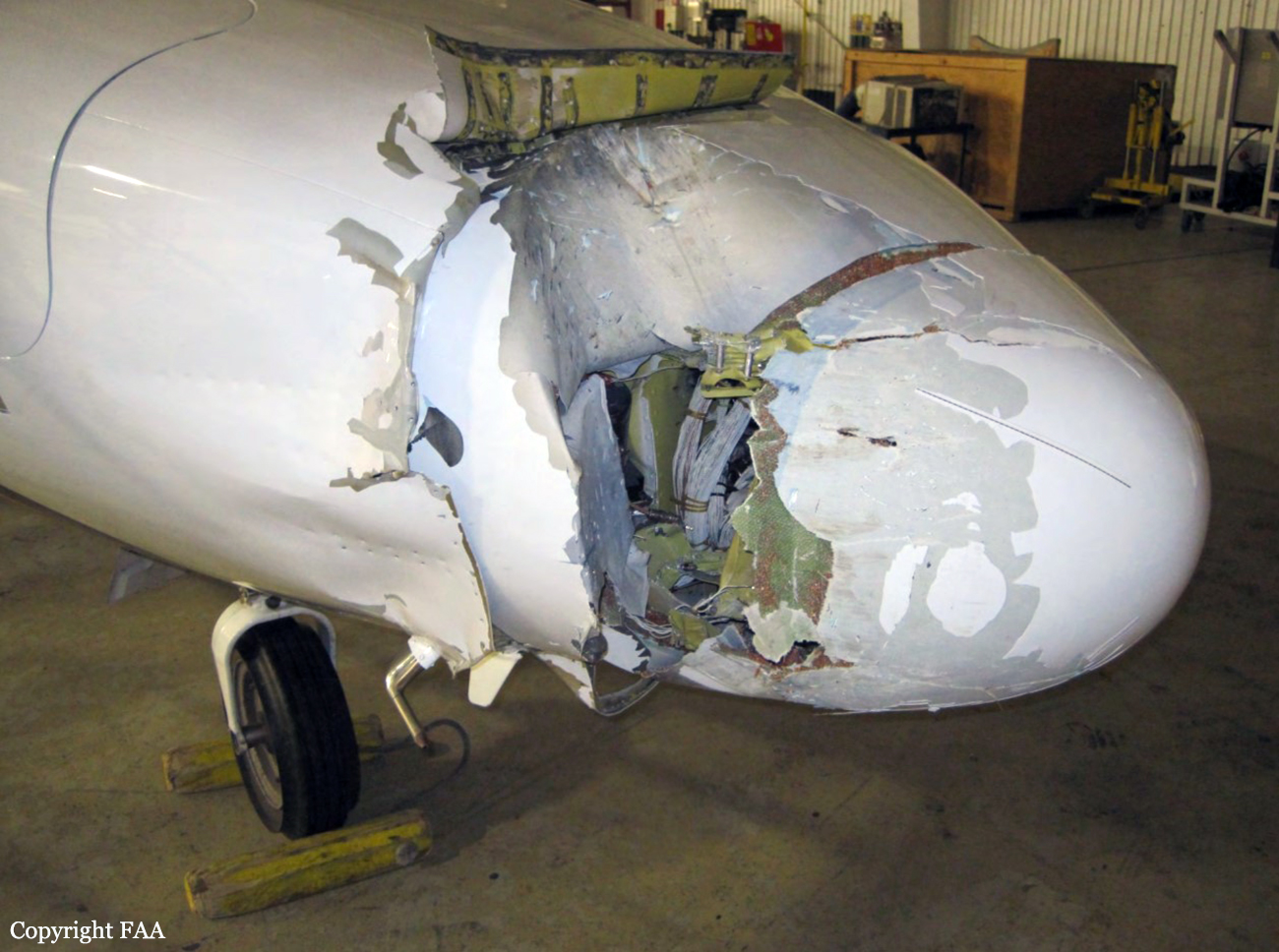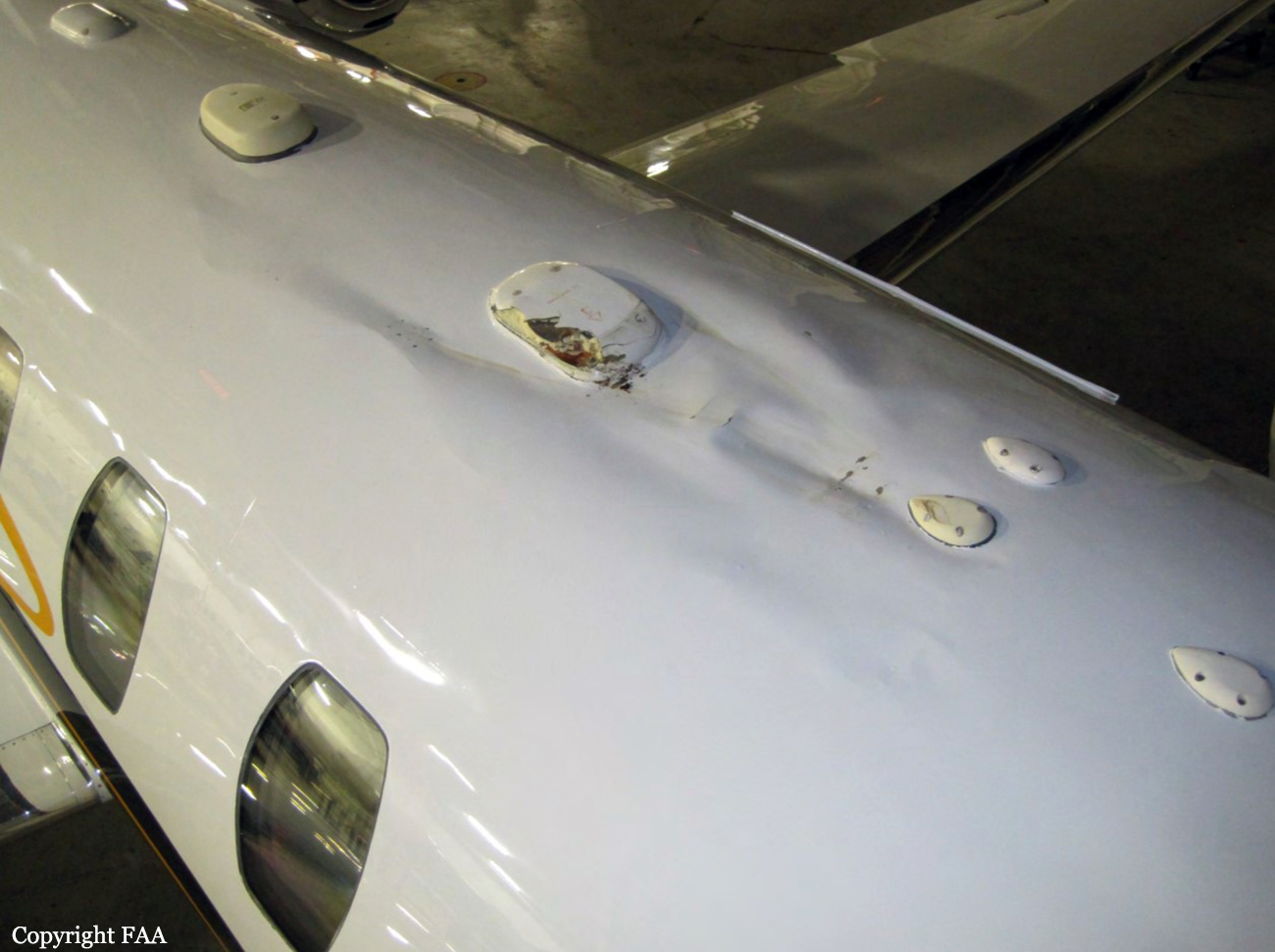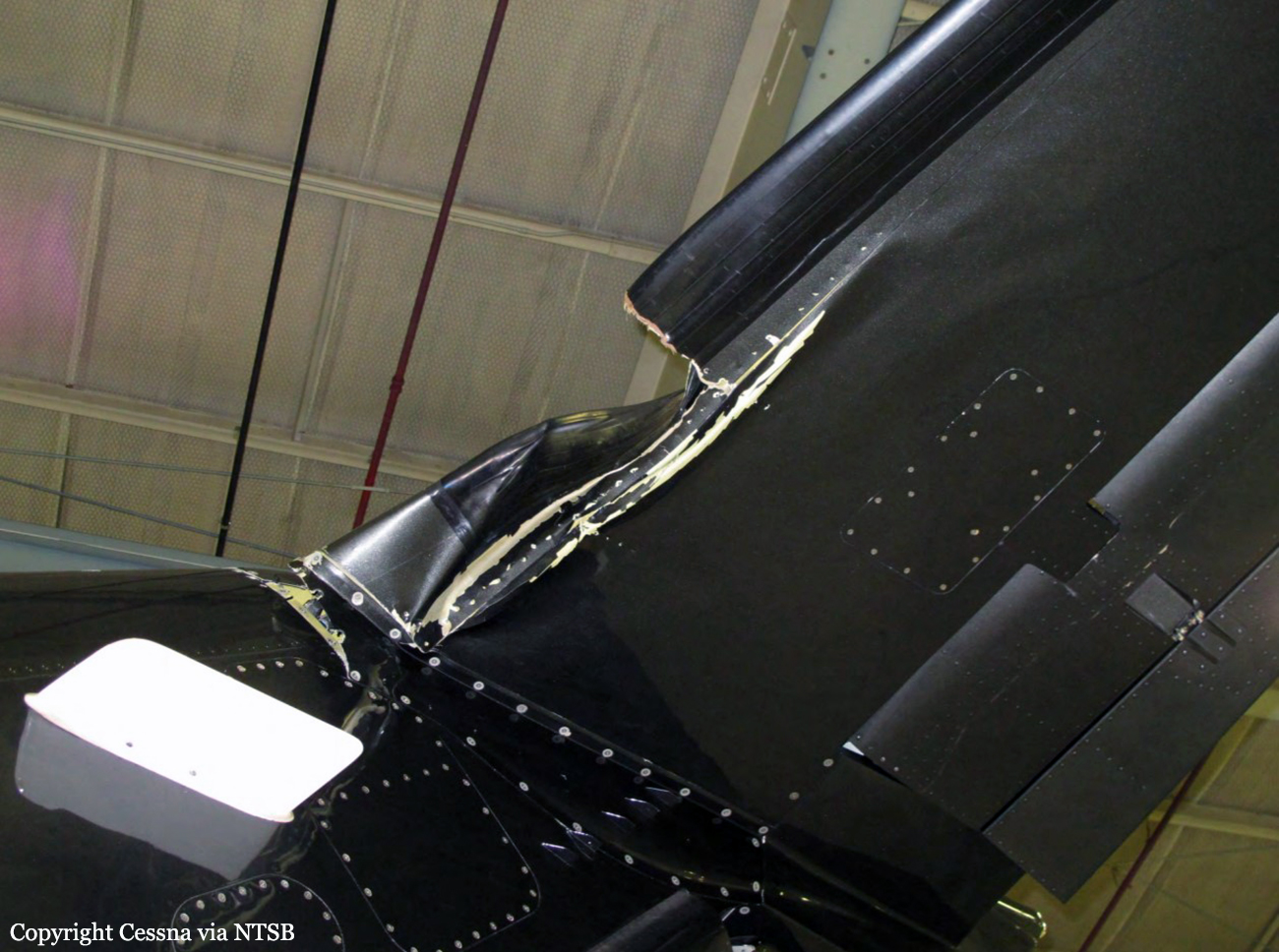Country
Crash of a Cessna 525 CitationJet CJ1 in Aruanã
Date & Time:
Jun 13, 2014 at 0747 LT
Registration:
PP-PIM
Survivors:
Yes
Schedule:
Goiânia – Aruanã
MSN:
525-0548
YOM:
2005
Crew on board:
2
Crew fatalities:
Pax on board:
5
Pax fatalities:
Other fatalities:
Total fatalities:
0
Captain / Total hours on type:
38.00
Copilot / Total hours on type:
4
Aircraft flight hours:
3517
Circumstances:
The aircraft departed Goiânia on a flight to Aruanã, carrying two pilots and five passengers who should take part to the funeral of former football player Fernandão who died in an helicopter crash. Following an uneventful flight, the crew completed the landing on runway 24 which is 1,280 metres long. After touchdown, the aircraft was unable to stop within the remaining distance and overran. While contacting soft ground, the nose gear collapsed then the aircraft collided with a concrete fence and came to a halt 150 metres further against a second fence. All seven occupants were injured, the captain seriously. The aircraft was damaged beyond repair.
Probable cause:
The following findings were identified:
- The copilot was not certified in the C525 type aircraft,
- The aircraft was above the maximum landing weight limit, but within the balance limit,
- On 13JUN2014, there was a NOTAM in force, informing the prohibition of jet aircraft operation in SWNH,
- The pilot acted incorrectly on the handle of the auxiliary gear control, thinking that he was applying the emergency brake, making the braking of the aircraft impossible.
- The activation of the incorrect lever for the emergency braking of the aircraft was due to insufficient training received by the pilot for the use of the system in question, thus compromising the proper management of the abnormal condition.
- The emergency brake actuator handle of the aircraft was located outside the pilot's sight field, which, together with the lack of knowledge about the correct lever to be activated for emergency braking, favored the pilot's automatic response in triggering the lever that was most adjusted and visually available on the panel - the emergency landing gear drive lever.
- The instruction that the pilot received to operate the Cessna aircraft, model 525 did not emphasize in the theoretical phase the proper use of the emergency brake, nor contemplated training for the use of this system.
- Despite having a lot of experience in aviation, the pilot was little experienced in the aircraft and still did not know basic functionalities like the use of the emergency brake and the engine shutdown through the evacuation checklist procedure.
- The copilot was not certified in the C525 type aircraft,
- The aircraft was above the maximum landing weight limit, but within the balance limit,
- On 13JUN2014, there was a NOTAM in force, informing the prohibition of jet aircraft operation in SWNH,
- The pilot acted incorrectly on the handle of the auxiliary gear control, thinking that he was applying the emergency brake, making the braking of the aircraft impossible.
- The activation of the incorrect lever for the emergency braking of the aircraft was due to insufficient training received by the pilot for the use of the system in question, thus compromising the proper management of the abnormal condition.
- The emergency brake actuator handle of the aircraft was located outside the pilot's sight field, which, together with the lack of knowledge about the correct lever to be activated for emergency braking, favored the pilot's automatic response in triggering the lever that was most adjusted and visually available on the panel - the emergency landing gear drive lever.
- The instruction that the pilot received to operate the Cessna aircraft, model 525 did not emphasize in the theoretical phase the proper use of the emergency brake, nor contemplated training for the use of this system.
- Despite having a lot of experience in aviation, the pilot was little experienced in the aircraft and still did not know basic functionalities like the use of the emergency brake and the engine shutdown through the evacuation checklist procedure.
Final Report:

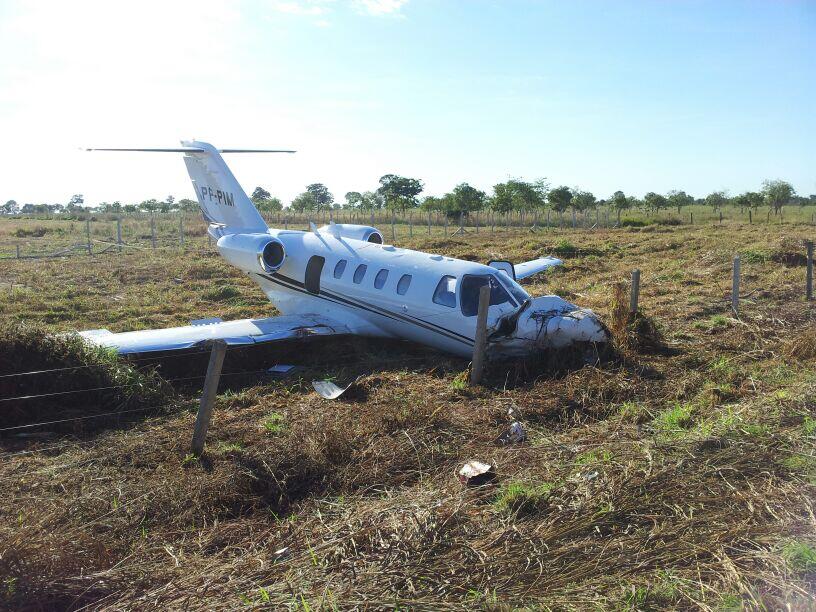

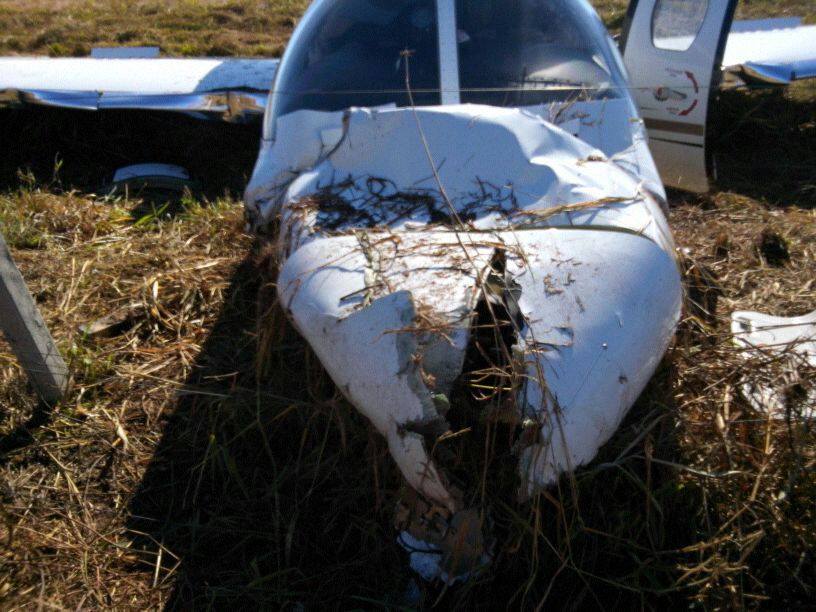
Crash of a Cessna 525 CitationJet CJ1 in Elk City
Date & Time:
Feb 3, 2014 at 2300 LT
Registration:
N61YP
Survivors:
Yes
Schedule:
Rapid City – Elk City
MSN:
525-0237
YOM:
1998
Crew on board:
1
Crew fatalities:
Pax on board:
6
Pax fatalities:
Other fatalities:
Total fatalities:
0
Captain / Total hours on type:
592.00
Aircraft flight hours:
4798
Circumstances:
The airline transport pilot was conducting a business flight with six passengers on board. Radar data showed that, after crossing the final approach fix for an instrument approach at the destination airport, the airplane descended below the minimum descent altitude (MDA) of 2,480 ft mean sea level (msl); dark night, instrument meteorological conditions existed at that time. Subsequently, when the airplane was about 2 miles from the airport and about 2,070 ft msl, the airplane impacted a utility pole, which was 10 ft above ground level (agl). After impacting the pole, the pilot executed a missed approach, and about 40 minutes later, he landed the airplane without further incident at another airport. On-scene examination showed that the impact had scattered debris from the separated utility pole for about 200 ft into a snow-covered field. Examination of the airplane revealed that the impact resulted in substantial damage to the nose structure, lower and upper fuselage, and horizontal stabilizer. Further examinations of the airplane, including its static system, both altimeters, both vertical speed indicators, and the radar altimeter system revealed no evidence of preaccident mechanical malfunctions or failures that would have precluded normal operation. The pilot reported that he thought he had leveled the airplane at an altitude above the MDA and that at no time during the descent and approach did the airplane's radar altimeter sound an alert indicating that the airplane was below 400 ft agl radar altitude. He also reported that he never saw the terrain, any obstructions, nor the runway lights or airport environment. Despite the pilot's statement, given the radar data and the impact evidence, it is apparent that he descended the airplane below the MDA, which resulted in the subsequent impact with the utility pole. It could not be determined why the radar altimeter did not alert the pilot that the airplane was only 10 ft above the ground. The pilot's second-class medical certificate, which had been issued more than 20 months before the accident, had expired. The medical certificate limitation section in the expired certificate stated, "Not valid for night flying or by color signal control." There is no evidence that these restrictions contributed to the accident.
Probable cause:
The pilot's descent below the published minimum descent altitude for the instrument approach procedure, which resulted in impact with a utility pole.
Final Report:

